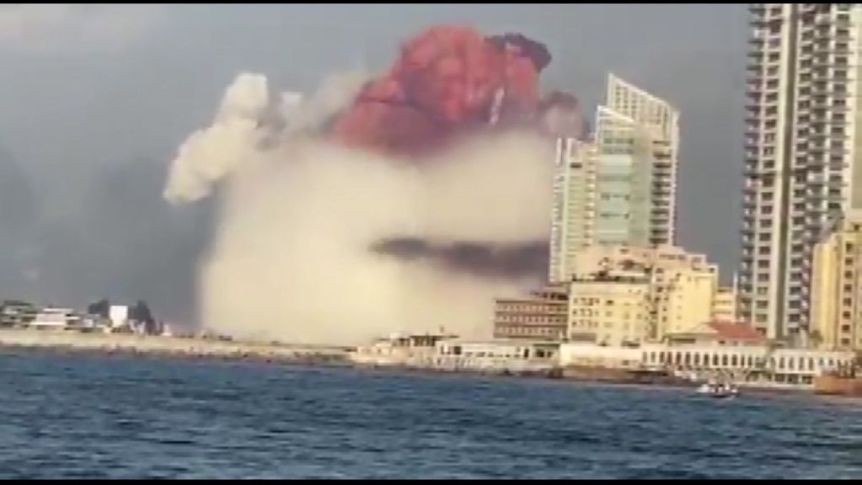This was back in the news again this week. In Lebanon, there was a store of ammonium nitrate ("AN", NH4NO3) fertilizer which blew up in a fire. If you really want it to blow up you add diesel or kerosene to it (6%). But pure it can also explode. After the Oklahoma City bombing there was a move to add adulterants to AN to remove it's ability to detonate, but I don't know if that happened.
But the video of the Beirut explosion was remarkable, because I clearly see two explosions, where the news only reports one. Here is great video of the explosion:
It was a massive explosion.
But there is a problem with the sequence of events: a cloud of orange nitrogen dioxide (a breakdown product of AN) pushed up before the large explosion happens. Watch the slow motion version of the above video: Replay it starting at 50 seconds. You will see one orange explosion which produces the orange cloud start at 53 seconds, which is already expanding upward, then at 56 seconds the detonation front is generated and expands outward. The fact that the orange cloud was outside the detonation front means the detonation is from a second, much more powerful explosion. The condensation cloud which accompanied the explosive front can't be the result of the first detonation; the detonation front is the fastest thing which can move in the air, and there is no way the orange cloud could extend beyond the detonation front if they both come from the same explosion.

The second explosion might be more AN burning, or it might be a second material stored near the AN which was triggered by the AN explosion. I don't know if some of the AN combustion products can then act explosively. I haven't explored the first possibility. Will NO2 detonate? Is there a second detonatable product of AN which is explosive?
In a nice comparison of the 2015 AN explosion in Tianjin, China, shown no second, larger explosion:
So I favor the second explanation, there was a second explosion less than three seconds later which might be caused by some other explosive being detonated by the concussion of the AN explosion.
Post-explosion analysis is always tricky. It doesn't seem easy to miss, and I may be interpreting the detonation front incorrectly.
A paper in Nature, v195, p. 277–278 (1962) Patterson and Davidson suggest that in the explosion of AN, nitrogen oxides are generated, but that the complete combustion produces only nitrogen and water, based on the amount of heat released:
IT has been appreciated for many years that ammonium nitrate, even when free from combustible material, can detonate. This is not surprising, since the products of decomposition must be entirely gaseous and have substantially less energy of formation than the original substance. For example, if the nitrogen is not oxidized, the energy released at constant volume, with water in the vapour phase, is 380 cal./gm. or 8.7 kcal. per mole of gas. This is, of course, rather low compared with typical values for explosives, which lie in the range 20–50 kcal./mole gas. The temperatures and pressures reached in the detonation wave will therefore also be relatively low, and one might expect the substance to detonate with difficulty and only under good confinement. This is found to be so. For normal material at densities around 1 gm./cm.3, cartridge diameters of many inches or heavy metal tubes are necessary, and even then the measured speeds are much lower than the maximum values calculated for products N2 + 2H2O + ½O2. This has led some authors to conclude that an equilibrium involving oxides of nitrogen is more appropriate, and that the release of energy is of order 230 cal./gm.